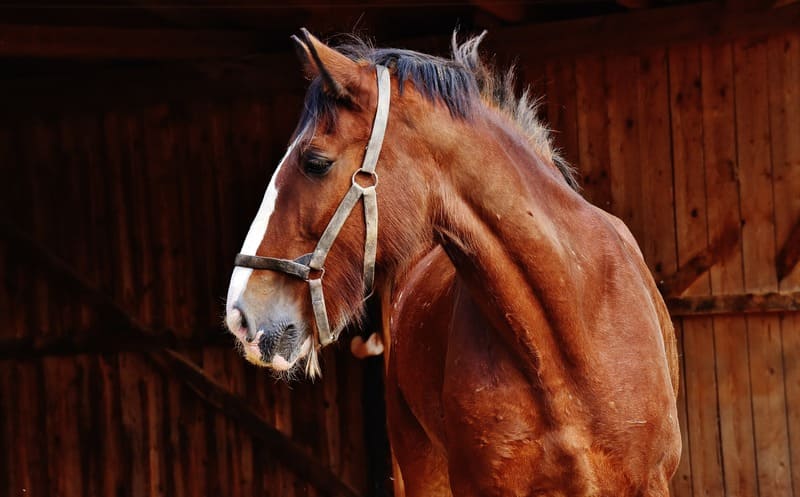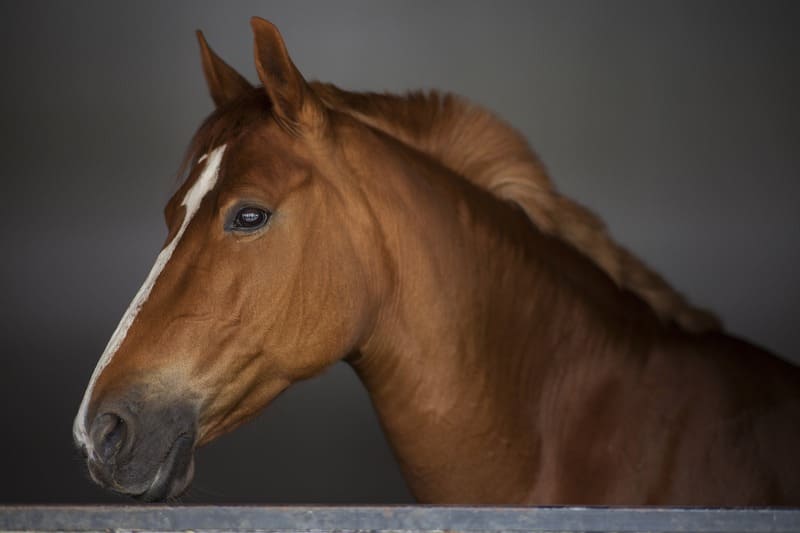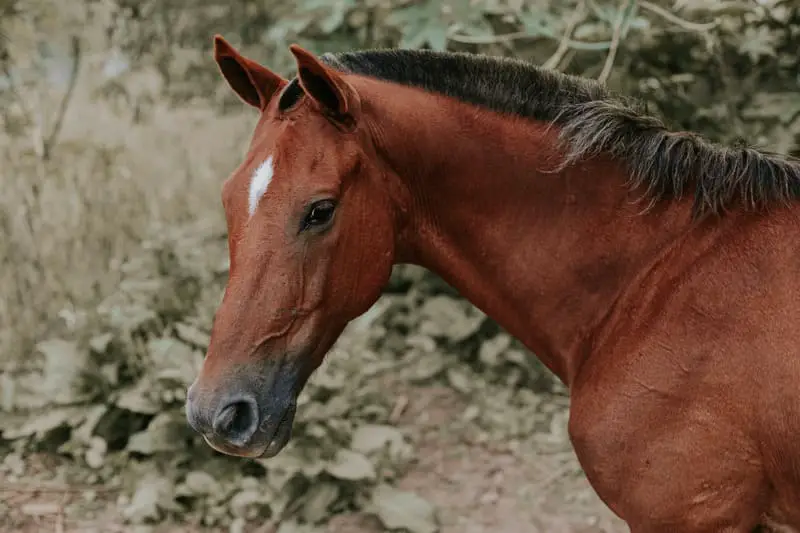Horses, magnificent and powerful creatures, have captured the human imagination for centuries. As equestrians and horse enthusiasts have interacted with these animals, many questions have arisen about their sensory perception, including their ability to see and interpret colors. One common inquiry is whether horses are color blind. In this comprehensive article, we will explore the fascinating world of equine vision, their ability to perceive colors, and the implications of their visual acuity on their behavior and interactions with humans.

Understanding Equine Vision
To understand whether horses are color blind, we need to delve into the intricacies of equine vision. Horses, like all animals, have evolved to perceive the world in ways that are adapted to their needs and environments.
Anatomy of the Equine Eye
Horses have large, expressive eyes that are positioned on the sides of their heads, allowing them to have a wide field of vision. Their eyes are adapted for detecting motion, which is crucial for a prey animal’s survival.
The equine eye contains structures that are similar to those in the human eye. The main components of the horse’s eye include:
- Cornea: The transparent, front surface of the eye that refracts light entering the eye.
- Iris: The colored part of the eye that controls the size of the pupil and the amount of light that enters.
- Pupil: The black, central opening in the iris that dilates or constricts to control the amount of light reaching the retina.
- Lens: A clear, flexible structure that helps focus light onto the retina.
- Retina: The light-sensitive tissue at the back of the eye that contains photoreceptor cells responsible for detecting light and transmitting visual information to the brain.
- Optic Nerve: The bundle of nerve fibers that carries visual information from the retina to the brain for processing.
Field of Vision
Horses have a remarkable field of vision due to the placement of their eyes on the sides of their heads. This arrangement allows them to have a nearly panoramic view of their surroundings, with a field of vision that covers approximately 350 degrees. However, this wide field of vision comes at the cost of binocular vision, where both eyes are focused on the same object, which is limited to a narrower range in front of the horse.
Night Vision
Horses have excellent night vision, thanks to their tapetum lucidum, a reflective layer in the eye that enhances their ability to see in low-light conditions. This layer reflects light back through the retina, increasing the chance for photoreceptor cells to detect it. As a result, horses can see well in dim or dark environments.
Monocular Vision
In addition to binocular and night vision, horses have monocular vision. Each eye can function independently, allowing them to monitor different parts of their environment simultaneously. Monocular vision is particularly useful for a prey animal, as it enables them to detect threats from various angles.

Perceiving Colors
Now, let’s explore the fascinating question of whether horses are color blind. Color vision is the ability to perceive and distinguish different colors in the visible spectrum. In humans, color vision is a result of having three types of color receptors, or cones, in the retina. These cones are sensitive to different wavelengths of light, allowing us to see a broad spectrum of colors.
Color Vision in Horses
Horses, in contrast to humans, have only two types of cones in their retinas, which limits their ability to perceive a wide range of colors. The two types of cones in the equine eye are sensitive to blue and green wavelengths of light. As a result, horses primarily see the world in shades of blue and green, with limited color discrimination.
Spectral Sensitivity
Horses are most sensitive to light in the blue and green parts of the spectrum, which are visible to them. They have a reduced ability to perceive colors in the red and yellow parts of the spectrum. To horses, objects that appear red to humans may appear more as shades of gray or green. This limited color perception has led to the misconception that horses are color blind.
Implications for Color Perception
Horses’ limited color vision has several implications for their behavior and interactions with their environment:
Camouflage Detection
Horses’ ability to detect objects that stand out based on their color is not as advanced as that of humans. For example, they may not easily distinguish between a red object and a green background. This is important in the context of natural predators or threats, as certain types of camouflage may be less effective against horses.
Responses to Color
Horses are known to respond to differences in light and contrast, even if they cannot perceive the specific colors of objects. For instance, they may respond differently to objects or patterns that have a high level of contrast, which makes them stand out against their surroundings.
Monocular and Binocular Vision
Horses use both monocular and binocular vision to assess their surroundings. Monocular vision allows them to perceive movement and contrast over a wide field of view, while binocular vision provides depth perception, which is useful for recognizing obstacles and evaluating distances.
Inheritance
The inheritance of color vision in horses is determined by genetics. The presence of specific genes influences the number and sensitivity of cones in the horse’s retina. This genetic variation can lead to differences in color perception among individual horses.
Behavioral Considerations
Horses’ limited color vision has implications for their behavior and interactions with humans. Understanding how they perceive their environment can help horse owners and caretakers provide effective training and care.
Training
When training horses, it’s important to consider their visual perception. For instance, using color-coded cues or obstacles in training may be less effective, as horses may not readily distinguish between certain colors. Instead, trainers often rely on other cues, such as contrast, shape, and brightness.
Rider Attire
Riders and handlers should be aware that horses may perceive their attire differently than humans do. For example, a bright red saddle pad may not appear as striking to a horse as it does to a human. This understanding can inform decisions about the choice of equipment and attire when working with horses.
Environmental Factors
The surroundings in which horses live and work can also be optimized for their vision. Using colors and materials that provide strong contrast can help horses navigate their environment more easily. This is particularly important in settings where horses are used for activities like jumping, where they need to accurately judge distances and obstacles.
Safety and Welfare
Understanding horses’ color perception is vital for their safety and welfare. For example, brightly colored objects on the trail or in the riding arena may appear different to horses than to humans. Being aware of this discrepancy can help prevent accidents and ensure the well-being of the horse and rider.
Visual Stress
Horses may experience visual stress when exposed to extreme contrasts, such as bright sunlight or intense artificial lighting. Minimizing glare and ensuring adequate shade in their environment can contribute to their comfort and well-being.
Equine Vision Research
Ongoing research in equine vision aims to further our understanding of how horses perceive the world. Researchers are investigating topics such as color discrimination, visual acuity, and the impact of various visual factors on equine behavior. This research can lead to valuable insights for the care and training of horses.

Equine Vision Myths and Misconceptions
As we explore the topic of equine vision and color perception, it’s important to address common myths and misconceptions about how horses see the world.
Myth: Horses See Everything in Black and White
This is a common misconception, but it is not accurate. Horses do see colors, albeit a more limited range of colors compared to humans. They are not color blind in the sense of seeing only in black and white.
Myth: Horses Can’t See Red
While horses may not see red as vividly as humans, they can perceive certain shades of red as part of their blue and green color spectrum. They may not, however, see red in the same way that humans do.
Myth: Horses Can’t See in the Dark
Horses have excellent night vision, thanks to their tapetum lucidum, which reflects light and enhances their ability to see in low-light conditions. They can see reasonably well in dim or dark environments.
Myth: Horses Can See Ultraviolet Light
Horses have the ability to see some ultraviolet (UV) light, but the extent to which they perceive it is not fully understood. Some researchers suggest that horses may use UV vision for specific purposes, such as identifying certain plant species or assessing the age of forage.
Conclusion
Horses have a unique and fascinating way of perceiving the world, which is distinct from human vision. While they are not color blind, their color perception is limited to shades of blue and green, with less sensitivity to red and yellow wavelengths. Understanding horses’ color vision and the implications for their behavior and interactions with the environment is essential for their care and welfare.
Horses’ wide field of vision, excellent night vision, and ability to use both monocular and binocular vision are all adaptations that have evolved to help them thrive as prey animals. This understanding informs the training, handling, and care of these magnificent creatures and ensures that they can live healthy, safe, and fulfilling lives in partnership with humans.
